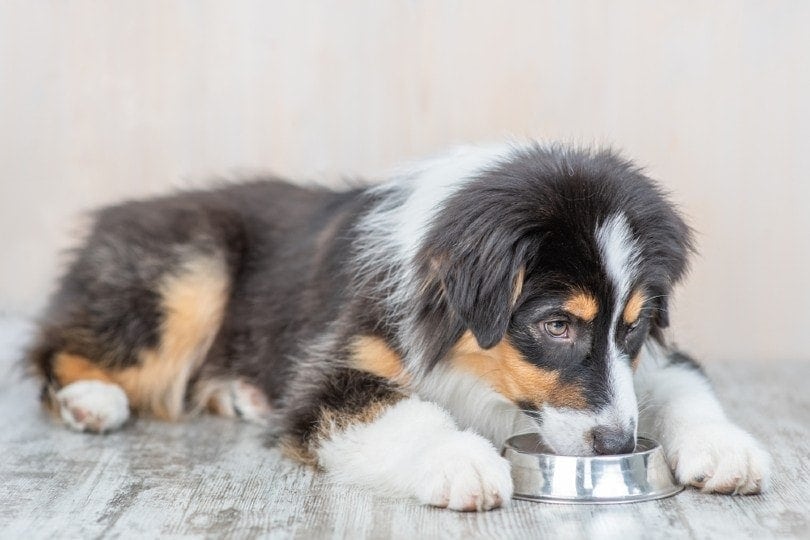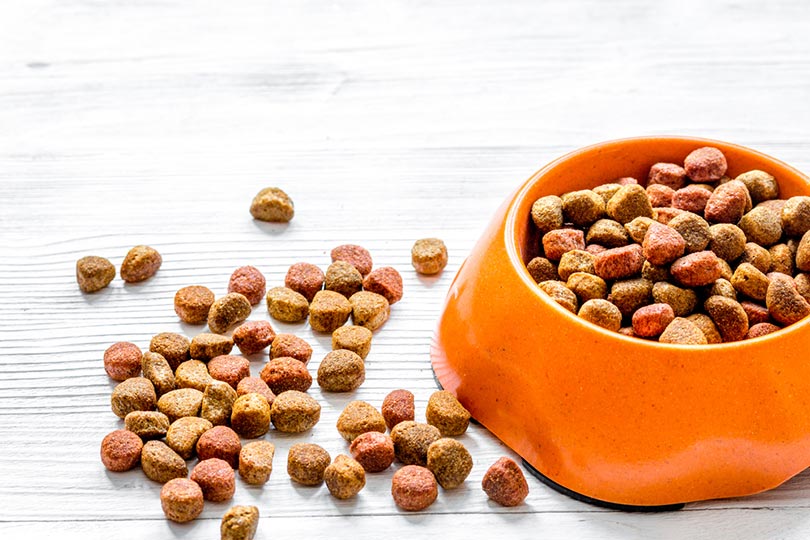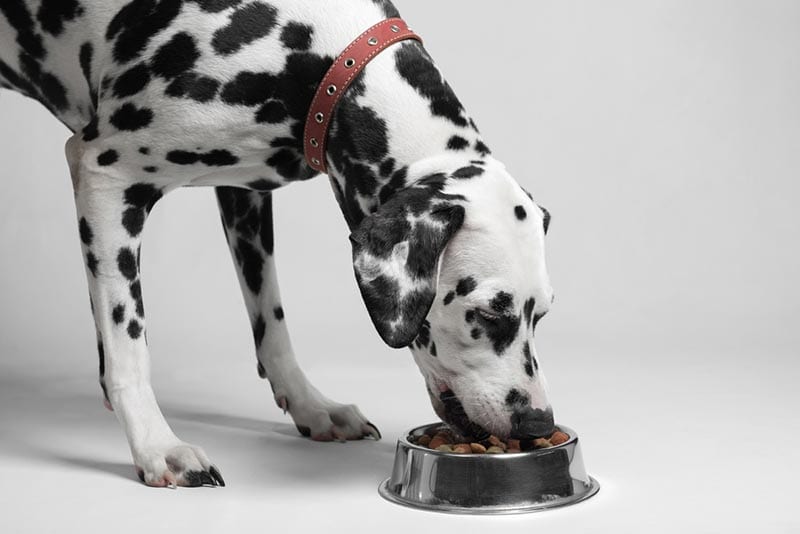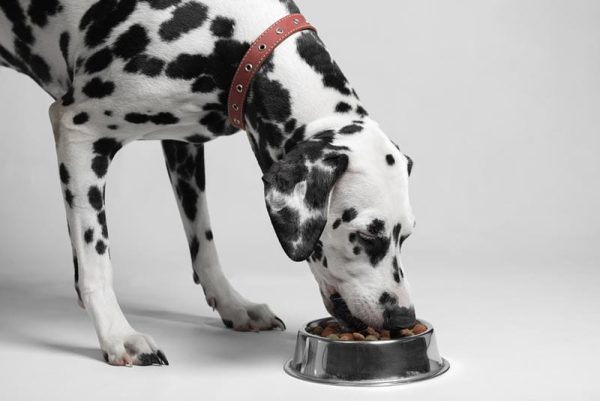Click to Skip Ahead
A mistake that many dog owners make is finding good dog food and sticking to it forever. In fact, that’s the advice that many people give—advice that may have even come from your parents when you adopted your first dog. However, no dog food is perfect, nor does it have absolutely everything that your specific dog needs nutritionally.
Switching dog food isn’t bad. It’s actually recommended. You can use different manufacturers and pick out different protein sources but stay within the high-quality range. Watch how well your dog does on the different foods, and once you’ve established the ones that suit them best, rotate around those every 2–4 months.

The 4 Benefits of Switching Food Often
There are many reasons that switching between dog foods is beneficial. It should be done for both healthy dogs and dogs with specific health needs.
1. Age
One big benefit to changing your dog’s food is that you can meet their new nutritional needs according to the life stage they’re in. Puppies, adult dogs, and senior dogs all require different things from their food.
Puppies are in their developmental stage, and as their bodies grow bigger, they’re going to need to consume more calories, protein, fats, and minerals to fuel their bodies. Puppy food is full of the nutrients that your pup needs, while adult food may not give them all the building blocks they need for a full, long, and healthy life.
In the same way, senior dogs require much fewer calories than puppies because they’re typically much less active and wouldn’t do well on their diet. There are certain dog foods that specially cater to your senior dog and their needs, especially if your dog has certain ailments and health issues.

2. Specialized Food
Changing your dog’s current food to something that suits their breed or health needs more closely is a good idea. Many dogs suffer from joint, weight, and skin problems. Some suffer from diabetes or kidney problems. There are specialized diets available that might be better for your dog than standard high-quality dog food. Chat to your vet about your dog’s health needs and what food may work best for them.
3. Allergic Reactions
One of the best benefits of switching your dog’s food often is avoiding allergic reactions. It’s not wildly uncommon for dogs to develop itchy skin or vomiting and diarrhea from food allergies. Most of the time, dogs become sensitive to the protein source in their food. Sometimes they become sensitive to the grain ingredients, but this is much less common.
Switch between dog foods with different protein sources, such as chicken, fish, lamb, venison, and beef, to prevent your dog from developing allergic reactions to these proteins. It’s also a great way to give your dog variety and maintain their interest in their food, especially if they’re fussy eaters.
4. It’s More Nutritious
As much as we’d like to believe that the food that we feed our dogs has everything they need in it, it sometimes doesn’t. Although high-quality dog foods do a much better job at giving your dog the nutrition they need, no dog food has it all.
By switching between high-quality dog foods, you’re giving your dog a wider variety of essential nutrients to benefit their bodies and keep a healthy, varied population of healthy gut bacteria.
Make sure you’re feeding your dog the right type and amount of food for their lifestyle, check out our dog food calculator here:
The exact amount of calories an individual animal needs to maintain a healthy weight is variable and influenced by many factors including genetics, age, breed, and activity level. This tool is meant to be used only as a guideline for healthy individuals and does not substitute veterinary advice
How to Safely Switch Your Dog’s Food
It’s okay to take your time with the switch. Transitioning your dog onto their new food can take anywhere between 1 and 2 weeks. You can even choose to take a longer approach and transition your dog onto their new food over the course of a month. Fussy eaters and dogs with sensitive stomachs tend to do better on longer transitions.
To switch your dog’s food safely, without causing gastrointestinal upset, start by giving them 90% of their old food and 10% of the new food mixed into one bowl. Do this for 2 days. On the third and fourth days, you can mix 25% of the new food with 75% of the old. On the fifth day, mix half of the old food and half of the new food for your dog to eat. From this point on, there should be more of the new dog food in your dog’s bowl than the old food.
On days seven and eight, mix 75% of the new food and 25% of the old food. From day nine, you can give your dog a full bowl of their new food. If your dog is sensitive or shows signs of gastrointestinal upset, start with a smaller portion of the new food and maintain the amount for 4 days instead of 2.
Remember to start the transitional phase when you are near the end of your dog’s last bag of food, but make sure there is enough to use throughout the changeover; otherwise, you’ll have to purchase a whole new bag of their last food to complete the transition.

Frequently Asked Questions
Can It Be Harmful to Switch Dog Food Often?
It isn’t harmful to change your dog’s food often, but how quickly you transition them from one food to another may cause them to vomit, have diarrhea, and experience discomfort in their stomachs.
Starting your dog on a new food without a transition period will be a shock to their system, and their gut won’t have a chance to adjust to it properly, which causes gastrointestinal upset. When dogs have a bad experience with new food, it can put them off from eating it and make the switch so much more difficult.
The only time you should change your dog’s food suddenly is if it’s been recommended by your vet.

What Happens If I Didn’t Transition My Dog’s Food?
If you transitioned your dog’s food too quickly or didn’t know you were supposed to and now your dog is sick, the best way to go about it is by withholding their food.
Fasting your pet for a meal or two isn’t going to cause any harm to your dog and instead allows their gut to “rest.” Withholding food doesn’t mean withholding water, so make sure they have plenty of it because they’re going to need it.
When their fast of 12–24 hours is over, don’t put them back onto their food straight away, but instead, offer them bland food that isn’t rich and hard to digest. White fish or chicken with boiled rice, pasta, or potato are great options.
Feed them smaller portions a few times throughout the day, and once their poop is at a healthy, solid consistency and their vomiting has stopped, you can feed them their old food once more and after a while, begin the transition process.
If your dog’s poop isn’t looking healthier after the fasting and bland diet or they’re showing other signs along with their upset stomach, such as fatigue, blood in their poop, etc., take them to the vet because their upset stomach may have been caused by something other than their diet.
Conclusion
Switching your dog’s food every 2–4 months is beneficial to them as it gives them nutritional variety, adds helpful bacteria to their gut, and helps them avoid developing food allergies. It’s also an easy way to keep your dog interested in their food, especially if they’re fussy eaters.
Never make a sudden switch to new dog food, as it’ll cause your dog to have gastrointestinal upset. A slow transition, usually between 1 and 2 weeks, will help your dog’s gut adapt to the new food.
Featured Image Credit: Sergey Fatin, Shutterstock












